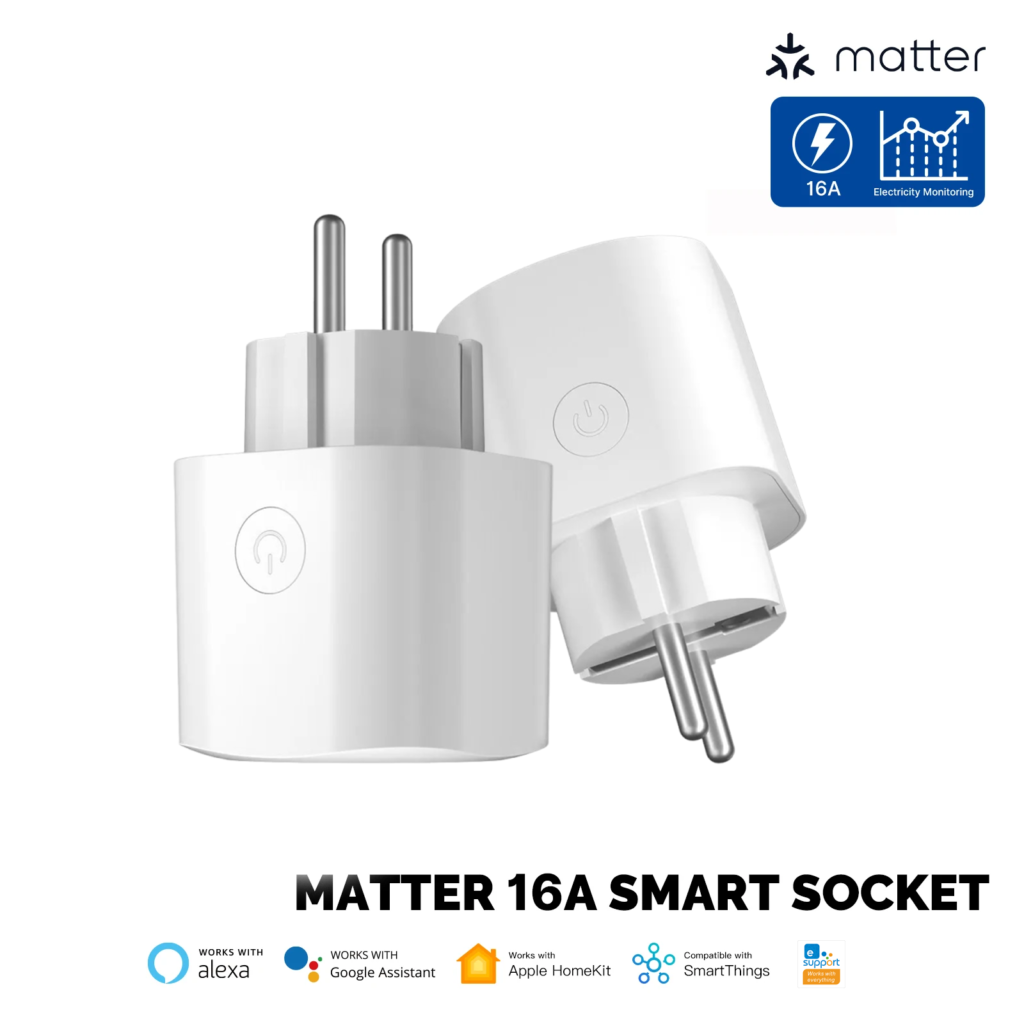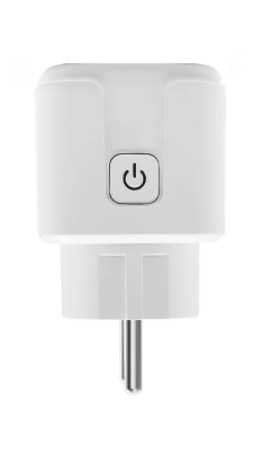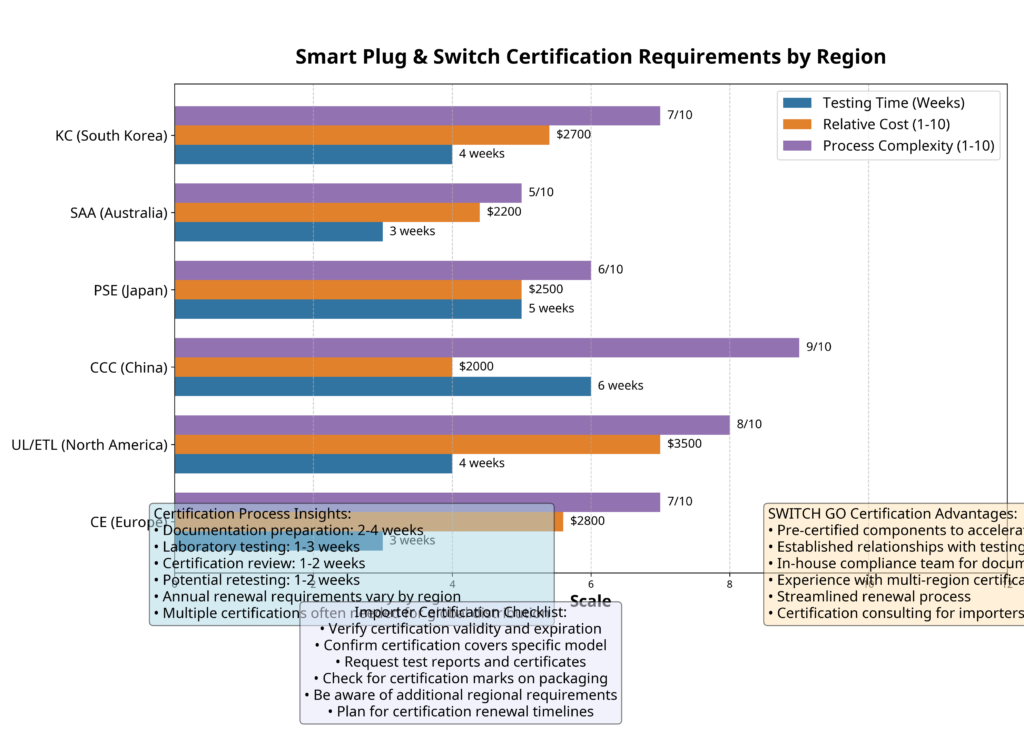Smart plugs have revolutionized the way we interact with traditional electrical outlets, transforming ordinary appliances into connected devices. As a leading smart home company in Shenzhen, SWITCH GO has been at the forefront of smart plug technology development, providing innovative solutions for both consumers and importers worldwide. This comprehensive guide explores the inner workings of smart plugs, their technological foundations, and practical applications.
Understanding Smart Plug Technology
Smart plugs are compact devices that sit between your electrical outlet and an appliance, enabling remote control and automation capabilities. At their core, smart plugs contain several key components that work together to provide their functionality:
Key Components of a Smart Plug
- Microcontroller Unit (MCU): The brain of the smart plug, typically a low-power microprocessor that manages all functions and communications.
- Wireless Communication Module: Enables connectivity through protocols like WiFi, Zigbee, Z-Wave, or Bluetooth. WiFi is the most common for direct internet connection, while Zigbee and Z-Wave require a compatible hub.
- Relay Switch: The electromechanical component that physically connects or disconnects the power flow to the attached device.
- Power Monitoring Circuit: Measures voltage, current, and power consumption of connected devices.
- Power Supply Unit: Converts AC power to the DC power needed for the internal electronics.
- LED Indicators: Visual feedback about the plug’s status, connection, and operation.
SWITCH GO’s smart plugs utilize advanced MCUs with optimized firmware that reduces power consumption by up to 35% compared to standard models, making them among the most energy-efficient options on the market.
How Smart Plugs Work: The Technical Process
The operation of a smart plug follows a specific sequence that enables its smart capabilities:
- Initial Setup: When first installed, the smart plug enters pairing mode, creating a temporary network for configuration.
- Network Connection: The user connects to this network via a smartphone app and provides WiFi credentials, allowing the plug to join the home network.
- Cloud Registration: The plug registers with the manufacturer’s cloud service, establishing a secure communication channel.
- Command Processing: When a user sends a command (via app, voice assistant, or automation rule), it travels through:
- User interface → Cloud server → Home network → Smart plug
- Physical Action: The microcontroller activates the relay switch to turn the connected device on or off.
- Status Feedback: The plug sends confirmation back to the cloud and user interface.
- Continuous Monitoring: Advanced smart plugs like those from SWITCH GO continuously monitor power consumption and can trigger actions based on predefined thresholds.
Communication Protocols: The Foundation of Connectivity
The choice of communication protocol significantly impacts a smart plug’s functionality, compatibility, and performance. For importers and distributors, understanding these differences is crucial:
| Protocol | Range | Power Usage | Hub Required | Market Share | Certification Requirements |
|---|---|---|---|---|---|
| WiFi | 100m | High | No | 58% | FCC, CE, CCC |
| Zigbee | 100m | Very Low | Yes | 17% | Zigbee Alliance, FCC, CE |
| Z-Wave | 30m | Low | Yes | 12% | Z-Wave Alliance, FCC, CE |
| Bluetooth | 10m | Medium | Sometimes | 8% | Bluetooth SIG, FCC, CE |
| Thread | 100m | Very Low | Yes | 3% | Thread Group, FCC, CE |
| Matter | Varies | Varies | Varies | 2% | CSA, FCC, CE |
SWITCH GO offers multi-protocol smart plugs that support WiFi, Zigbee, and Matter, providing importers with flexible inventory options that can address various market segments with a single product line.

Our smart plugs are compatible with multiple platforms.
Power Monitoring and Energy Management
Modern smart plugs do more than simply turn devices on and off—they provide valuable insights into energy consumption patterns:
Energy Monitoring Capabilities
- Real-time Power Measurement: Tracks current power draw in watts
- Consumption History: Records usage patterns over time
- Cost Estimation: Calculates approximate electricity costs
- Anomaly Detection: Identifies unusual power consumption
- Usage Reports: Generates periodic summaries of energy usage
SWITCH GO’s advanced power monitoring technology offers precision to within ±1% accuracy, compared to the industry standard of ±3-5%, providing consumers with more reliable energy consumption data.

We offer 16A Smart Plugs with energy monitoring.
Smart Plug Applications in Different Settings
Smart plugs have found applications across various environments, each with unique benefits:
Residential Applications
- Energy Saving: Automatically turning off devices when not in use
- Remote Control: Managing appliances while away from home
- Scheduling: Setting timers for lights, coffee makers, etc.
- Away Mode: Simulating occupancy for security
- Voice Control: Integration with voice assistants
Commercial Applications
- Energy Management: Monitoring and controlling power consumption
- Equipment Protection: Preventing damage from power surges
- Usage Analytics: Tracking equipment utilization
- Automated Operations: Scheduling business equipment
- Remote Monitoring: Managing multiple locations centrally
Industrial Applications
- Condition Monitoring: Tracking equipment performance
- Predictive Maintenance: Identifying potential failures before they occur
- Process Automation: Integrating with industrial control systems
- Energy Optimization: Reducing power consumption during peak periods
- Safety Controls: Emergency shutoff capabilities
Certification and Compliance: Critical for Importers
For importers and distributors, understanding certification requirements is essential. Smart plugs must comply with various regional standards:
Global Certification Requirements
- North America: UL/ETL certification, FCC compliance
- European Union: CE marking, RoHS compliance
- Asia-Pacific: CCC (China), PSE (Japan), KC (South Korea)
- Australia/New Zealand: SAA certification, RCM marking

certification requirements comparison

global certification requirements improved
SWITCH GO maintains comprehensive certification for all major markets, simplifying the import process for distributors. Our in-house compliance team stays current with regulatory changes, ensuring products meet the latest requirements.
Manufacturing Considerations for Smart Plugs
The manufacturing process for smart plugs involves several critical factors that impact quality, reliability, and safety:
Key Manufacturing Factors
- Component Selection: High-quality relays, capacitors, and resistors ensure longevity and safety.
- Circuit Design: Proper isolation between high and low voltage sections prevents hazards.
- Heat Management: Thermal design prevents overheating during continuous operation.
- Quality Control: Rigorous testing for electrical safety, connectivity, and functionality.
- Material Selection: Flame-retardant plastics and proper insulation materials enhance safety.
SWITCH GO’s manufacturing facility in Shenzhen implements a six-stage quality control process, resulting in a defect rate of less than 0.3%, significantly below the industry average of 1.2%.
Future Trends in Smart Plug Technology
The smart plug market continues to evolve with several emerging trends:
- AI Integration: Smart plugs with machine learning capabilities that adapt to usage patterns.
- Enhanced Security: Improved encryption and authentication to prevent unauthorized access.
- Energy Harvesting: Reducing or eliminating standby power consumption.
- Miniaturization: Smaller form factors that don’t block adjacent outlets.
- Multi-Function Capabilities: Integration of additional sensors and features.
SWITCH GO’s R&D department is currently developing next-generation smart plugs incorporating AI-driven power management that can reduce energy consumption by an additional 15-20% through intelligent device control.
Choosing the Right Smart Plug: Importer’s Guide
For importers and distributors, selecting the right smart plug products involves considering several factors:
Selection Criteria for Importers
- Target Market Requirements: Regional plug standards and certification needs
- Protocol Compatibility: Ensuring compatibility with popular smart home ecosystems
- Power Specifications: Voltage, current, and power handling capabilities
- Feature Set: Basic functionality vs. advanced capabilities
- Price Point Positioning: Entry-level, mid-range, or premium market segments
- Customization Options: Private labeling, packaging, and firmware modifications
- Minimum Order Quantities: Production run requirements and inventory management
- Support and Warranty: After-sales service and warranty terms
SWITCH GO offers flexible MOQ terms starting at 500 units for standard models and 1,000 units for customized versions, with comprehensive support including marketing materials, technical documentation, and a 24-month warranty program.
FAQ: Common Questions About Smart Plugs
What’s the difference between a smart plug and a smart outlet?
A smart plug is a portable device that plugs into an existing outlet, while a smart outlet replaces your standard wall outlet with a permanently installed smart version. Smart plugs offer flexibility and don’t require installation, while smart outlets provide a cleaner look but need electrical installation.
Are smart plugs a fire hazard?
Quality smart plugs from reputable manufacturers like SWITCH GO undergo rigorous safety testing and certification. They include multiple safety features such as overload protection, surge protection, and flame-retardant materials. Always ensure any smart plug you purchase has the appropriate safety certifications for your region.
How much energy do smart plugs themselves consume?
Most smart plugs consume between 0.5-2 watts when in standby mode. SWITCH GO’s energy-efficient models use only 0.4 watts, making them among the most efficient on the market. This minimal consumption is far outweighed by the energy savings they enable through automated control of higher-consumption devices.
Can smart plugs work without internet?
Most WiFi smart plugs require internet for remote control and full functionality. However, some models maintain basic scheduling capabilities even when internet is unavailable. Zigbee and Z-Wave plugs will continue to work within your local network without internet, provided your hub is operational. SWITCH GO’s dual-mode plugs can operate on local network protocols when internet connectivity is lost.
What’s the typical lifespan of a smart plug?
A quality smart plug should last 5-10 years under normal conditions. The most common failure point is the relay switch, which has a finite number of switching cycles (typically 50,000-100,000). SWITCH GO uses industrial-grade relays rated for 100,000+ cycles, providing an estimated 10+ year lifespan with normal use.
Conclusion
Smart plugs represent one of the most accessible entry points to home automation, offering significant benefits in convenience, energy savings, and enhanced functionality for ordinary appliances. For importers and distributors, they present an attractive product category with growing demand and diverse applications.
SWITCH GO continues to lead innovation in this space, developing smart plugs that combine energy efficiency, reliability, and advanced features. Our comprehensive support for importers—including certification assistance, marketing materials, and flexible ordering terms—makes us an ideal partner for businesses looking to enter or expand in the smart home market.
By understanding the technology, applications, and market considerations outlined in this guide, importers can make informed decisions about smart plug products that will resonate with their target customers and provide sustainable business growth.
